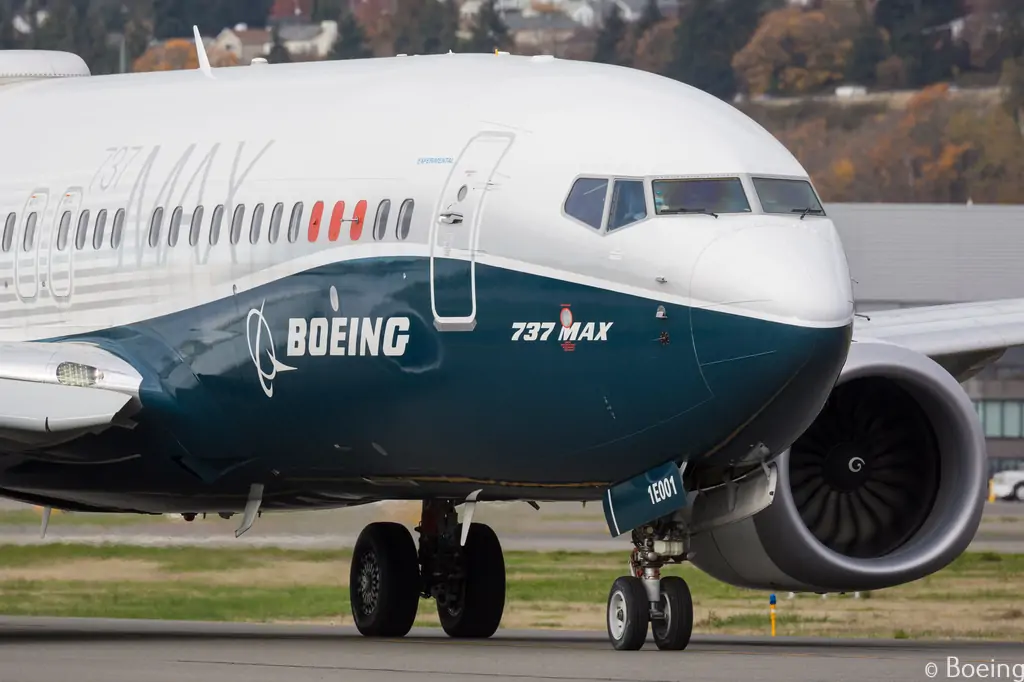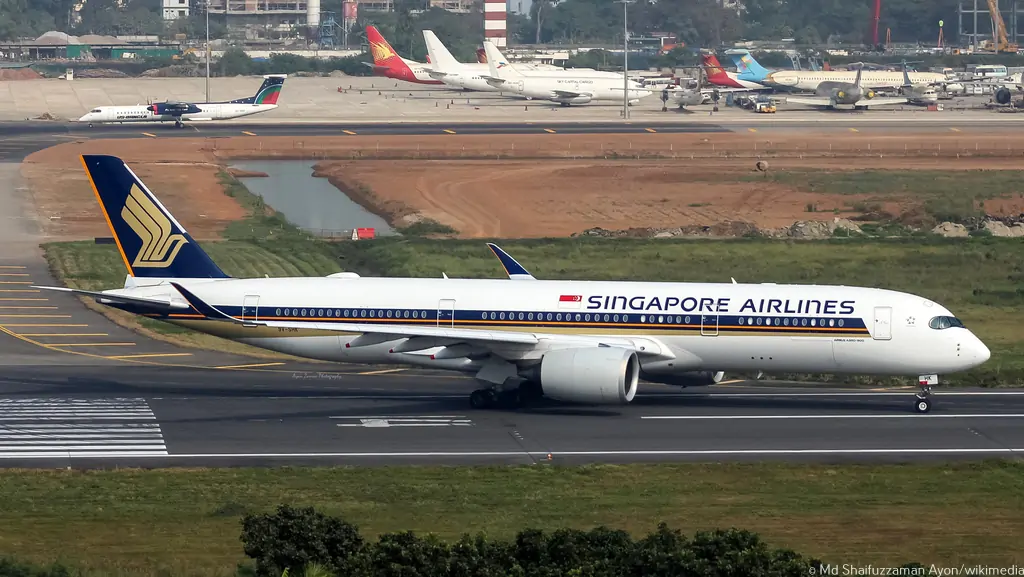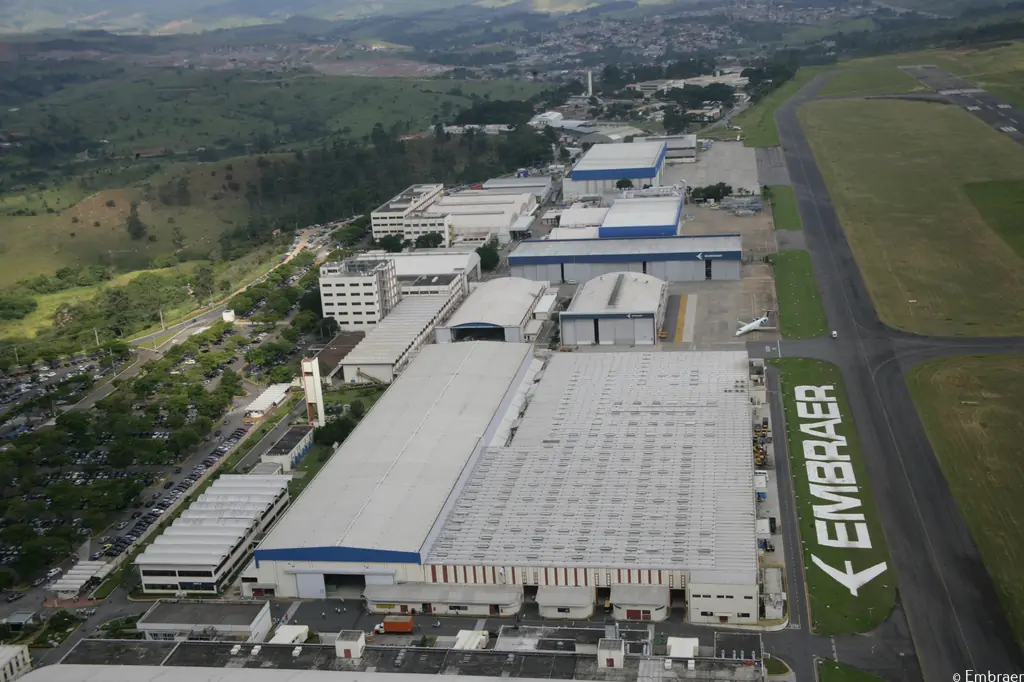New Terminal Building of Kanpur Airport Inaugurated by UP CM Yogi & Jyotiraditya Scindia
Radhika Bansal
26 May 2023

Uttar Pradesh Chief Minister Yogi Adityanath and Civil Aviation Minister Jyotiraditya Scindia inaugurated the new terminal building of Kanpur Airport today (May 26). The ‘Airport Authority of India’ has constructed a new terminal at Chakeri's Mawaiya area. Until now, flights operated from the Air Force runway but recently flights to the national capital were stopped. Currently, flights to three cities, namely Delhi, Mumbai and Bengaluru are operating but with this new development, Kanpur will be connected to 10 cities in the country.
Features of the new terminal building
The new terminal building — 16 times bigger than the existing one — is a step towards improving connectivity and enhancing passenger experience, and will also integrate the culture and heritage of Kanpur, according to a government release. The terminal building of the new civil enclave is built in an area of 6,243 square metres at a project cost of INR 150 crore. It has a spacious concessionaire area covering 850 square meters, offering travellers a diverse range of retail and dining options.
The terminal is equipped to handle 400 passengers during peak hours compared to 50 passengers in the existing building. On the city side of the terminal, there are 150 car parking spaces and two bus parking spaces, ensuring ample parking facilities for commuters.
The newly developed apron is suitable for parking three A321/ B737 types of aircraft along with a new link Taxi Track of 713m X 23m, said the release. Eight check-in counters have been built, and three conveyor belts have been set up — with one located in the departure hall and two in the arrival hall.
The building has various sustainability features like a double insulated roofing system, provision of canopies for energy saving, LED lighting, low heat gain double glazing unit, rainwater harvesting to recharge the groundwater table, water treatment plant, sewage treatment plant, and use of recycled water for landscaping.
Along with this, a solar power plant with a capacity of 100 KWp has also been set up and has been provided to meet GRIHA-IV ratings — a national green building rating system in the country denoting sustainable development and responsible resource management.
The exterior of the building depicts the temple architecture of the famous JK Temple of Kanpur, while the interiors are based on various local themes such as textiles, leather industries, and the city’s renowned public figures like poet Shyamlal Gupta and sage Maharishi Valmiki.
Flights to Delhi soon
Speaking at the inauguration of the new terminal building of Kanpur Airport, the Union minister said, "We have announced 59 new routes and 122 new routes will be announced in the future. We have the vision to connect Kanpur with Pantnagar, Aligarh, Moradabad and Shravasti." There are currently 11 airports operating in the state, and 11 more airports will be started over the next three years. Uttar Pradesh will get 22 new airports altogether. Be it Chitrakoot, Moradabad, Jhansi, Ghazipur, Aligarh, Azamgarh, Saharanpur or Shravasti, airport facilities will be provided at all these places, Scinidia said.
He also said that a new airport will be built in Ayodhya in the next 1.5 years, and the facility coming at Jewar will compete with airports in cities like Delhi, Mumbai, Kolkata, and Hyderabad. In 2013-14, there were 652 airplane arrivals per week in Uttar Pradesh, he said, adding that under the leadership of Prime Minister Narendra Modi and chief minister Yogi Adityanath, today the state sees 1,595 airplane arrivals a week, which is 145% higher.
About Kanpur Airport
Kanpur Airport, proposed to be renamed as Ganesh Shankar Vidyarthi Airport, is a domestic airport and an Indian Air Force Base serving Kanpur, Uttar Pradesh. It provides easier connectivity to major tourist and historical attractions in the area. It is the 5th most profitable airport in India in the year 2020–21.
Due to the limited expansion options available and restrictions enforced by the Airports Authority of India due to a strong military presence, the current terminal is too small to be able to cope with the increasing traffic and demands coming into Kanpur in the future. To solve this problem, a new terminal spread over 6,200 sq.m. has been constructed nearby to the threshold of the eastern end of the runway and to NH-19 through a new approach road.
Read next
Boeing Begins Deliveries of Modifies B737 Aircraft Following Fuselage Issue
Radhika Bansal
26 May 2023

Boeing has started delivering reworked 737 jets from inventory to customers after a manufacturing glitch forced a brief halt, the company said on Thursday, May 25 adding it will be "disciplined" in setting jet prices during the current boom. The resumption could help the planemaker achieve the goal of 400-450 deliveries of the jet this year, a target closely watched by investors as the company looks to recover from successive crises caused by two fatal crashes and the pandemic.
"We still expect the first half of the year to be about 30 per month and the back half of about 40 per month," CFO Brian West said, referring to deliveries, at a conference organized by Wolfe Research.
The company stopped delivering some 737 Max 8s and 737NG-based P-8 military surveillance jets earlier this year due to the problem, which reportedly involved defective clips that attach to vertical stabilisers which connect the vertical tail with the fuselage made by Spirit AeroSystems. Because the issue did not affect all 737s, Boeing never outright halted 737 deliveries. But the hiccup slowed the rate at which Boeing has been handing the narrowbodies to customers. Some analysts had expected the halt to delay Boeing's plans for a 737 MAX production ramp up to 38 per month from 31 currently.
Cash Low & Aircraft Deliveries
But West reiterated that the company expects to hit that target this year. "I don't know exactly when, but that is in our game plan," he added. Meanwhile, West said the top end of Boeing's USD 3 billion to USD 5 billion free cash flow forecast was a "bit pressured," in part due to supply-chain problems at its ailing defence business, even as the planemaker maintained that goal.
West said the current environment was "pretty good for price realization" and that Boeing would be "disciplined" in setting prices. That milestone shows that Boeing’s recovery from the problem is “on track“, he adds, noting Boeing still expects to meet its previously stated goal of delivering 400 to 450 of the narrowbodies this year. Boeing delivered just 18 737s in April but aims to soon hike the rate to about 30 monthly, and then to about 40 monthly by year-end.
Order books at Boeing and its European rival Airbus have swelled as carriers rush to buy jets to tap into a resurgence in travel, increasing the planemakers' bargaining power. "We just keep on selling in the future," West said.
Earlier this month, Ireland's Ryanair said it paid more per seat than in previous deals as it unveiled an order for as many as 300 Boeing jets. Supply chain snarls, however, remain on the watch list. Some parts of the supply chain aren't quite "where they need to be," West said. The problem affects both in-production 737s and an undisclosed number of already produced, in-service jets, though Boeing insists affected aircraft are safe to fly. Boeing’s shares were up about 1% after briefly turning negative on Thursday, May 25.
Boeing Intends To Ramp Up 737 MAX Production
Boeing has upped its monthly production plan to 38 planes from 31. The company expects to deliver up to 450 737 planes this year. Boeing CEO Dave Calhoun has apologised to customers for the delay in delivery of its popular 737 Max aircraft after learning about a manufacturing issue in the aft fuselage section of the plane. "The worst part of the notice of the defect that we got is the timing. It is right at the centre of their (airlines) summer schedules and we have to differ deliveries for that period, it costs some real money, so apologies to everyone, we are working very closely with them, Calhoun told CNBC in an exclusive interview.
Air India & Akasa Air are the two Indian airlines that have placed orders for the 737 Max aircraft and sources said their expansion plans are likely to be hit as Boeing reschedules deliveries. Air India was expecting some 737 Max planes out of the 190 it ordered to be delivered this year itself. Akasa Air is also awaiting 53 of the 72 aircraft it had ordered that will be delivered by 2027.
But according to the Boeing CEO, these delays are for a short period and their annual delivery guidance is on track. "We still believe we are within that guidance, we are clearly going to differ some things from the second quarter to the third quarter & a bit to the fourth quarter, but on balance, we think we are in a pretty good shape to meet that guidance," he said. "As demand surges across our markets, we must focus together on execution and meeting our customer commitments,” the CEO told employees.
737 Fuelsage Issue
Boeing benefited from more 737 and 787 handovers, although “customer considerations” relating to 787s offset the revenues. While it acknowledges that near-term production of 737s will be affected by inspections and rework, following the discovery of a manufacturing process issue in the aft fuselage of certain aircraft, the airframer is maintaining its projection of 400-450 deliveries. It aims to increase 737 output to 38 aircraft per month later this year and reach 50 per month over 2025-26. Boeing also intends to lift monthly production of 787s – currently at three aircraft – to five in late 2023 and, in 2025-26, reach 10.
Referring to the 737 issues, he says it poses ”no immediate safety of flight concern” and that the company will “work diligently” to ensure aircraft meet the company’s standards before delivery. Calhoun says he is “proud of the team” for ”immediately and transparently” bringing the matter forward with the regulator and Boeing’s customers. “This is how we continuously improve,” he adds.
During a first-quarter briefing, chief executive Dave Calhoun stressed that the company was “working in a very constructive way” with fuselage supplier Spirit AeroSystems and that near-term deliveries and production will be lower, and the levels will recover over the coming months.
He says the issue is “understood” and isolated to two specific fittings. “And we know what we have to do,” he states. “Unfortunately the timing of these delivery shortfalls will impact summer capacities for some customers. And we feel terrible about that.”
Boeing delivered 113 737s over the first quarter including 53 in March. Boeing ended the quarter with some 225 737 Max jets in its inventory, including 138 built for customers in China. Some 30 of the Max jets in the inventory are Max 7s and 10s. Boeing stresses that the certification timelines on these variants “have not changed”.
Read next
Singapore Airlines (SIA) constantly evaluates and innovates its in-flight services in order to enhance the customer experience while minimizing the adverse environmental impact. As part of this commitment, SIA initiated a trial to assess the potential of serving in-flight meals in paper boxes on medium and long-haul flights. However, based on feedback from the trial, the airline has opted not to pursue the aforementioned packaging option.
Present Scenario
Singapore Airlines (SIA), a prominent international partner of Air India, has declared that, for the time being, it will no longer use paper boxes for in-flight meals on medium and long-haul flights. This decision is the result of feedback following a study that was undertaken earlier this year, as reported in the media.
In recent months, several netizens have criticized the national carrier's economy class meals, with the paper service ware trial sparking debate about the airline's food presentation. The article said that SIA has previously responded to criticisms about cost-cutting by noting that the experimental meal boxes cost more than the disposable plastic casserole plates that it uses.
Trial feedback and decision not to proceed
Following the trial period, Singapore Airlines (SIA) acquired excellent input on the usage of paper boxes for in-flight meals from passengers and crew members. The responses suggested that this packing choice had several limitations and issues. Concerns expressed throughout the experiment included leakage, a lack of structural integrity, and difficulties in handling.
Environmental Concerns and Sustainability Initiatives
Singapore Airlines (SIA) is committed to resolving environmental problems and actively engages in aviation industry sustainability efforts. Recognizing the environmental effects of single-use plastics and non-biodegradable materials, the airline is always looking for alternative solutions that encourage sustainability.
Alternative Packaging Solutions for In-Flight Meals
While Singapore Airlines (SIA) has decided not to use paper boxes for in-flight meals at this time, the company is committed to investigating alternative packaging choices that prioritize sustainability. SIA hopes to develop eco-friendly materials and new solutions that solve the issues encountered during the trial period by collaborating with suppliers and industry experts.
Benefits of Sustainable Practices in the Airline Industry
Singapore Airlines' (SIA) decision to phase out the usage of paper boxes for in-flight meals emphasizes the relevance of sustainable practices in the airline industry. Airlines may make substantial contributions to the preservation of the world by implementing ecologically friendly methods.
Conclusion
Following feedback from its experiment earlier this year, Singapore Airlines (SIA) has chosen not to use paper boxes for in-flight meals on medium and long-haul flights. This decision underlines the airline's dedication to offering high-quality services while also putting environmental sustainability first.
With Inputs from Money Control
Read next
Aviation Minister Urges Airlines To Go International & To Help Set Up an International Civil Aviation Hub in India
Radhika Bansal
26 May 2023

Civil Aviation Minister Jyotiraditya Scindia urged domestic airlines to help set up an international civil aviation hub in India and emphasised the need for having more wide-body planes to have point-to-point international services for passengers. India is one of the fastest-growing civil aviation markets in the world and Tata Group-owned Air India recently placed a historic order for 470 aircraft, including wide-body planes.
For too long, our civil aviation hubs have been with the neighbours on our eastern border (Singapore, etc) or with the neighbours on the western border (Dubai, Doha, etc),” he said. He added that India must have more wide-body planes to build hubs. “We must be able to fly point-to-point from India as opposed to the circuitous route that all our passengers are being made to follow,” Scindia noted. As the government works on ways to boost the country's high growth potential in the civil aviation market, the minister said that now the time has come to set up a civil aviation hub in India.
Indian Civil Aviation Market
"Margins are slim, revenues are slim but airlines are comfortable competing on the domestic side because volatility is low. The minute you go to the international side, the revenues are high... but the volatility is much greater. "I plead to the airlines to take the risk, face volatility because India's flag has to fly in the international airspace," Mr Scindia said.
Currently, Indian carriers operate only about 40% of total international flights to and from India. Go First, which went insolvent earlier this month, was operating 128 international flights a week in April, which was just 10% of its total flight network during the month. Only about 15% of SpiceJet’s total flights are international, according to aviation analytics firm Cirium’s data. SpiceJet has been making losses since 2018-19.
"Civil aviation brings a dividend of 3.1% in terms of economic growth and 6.1% in employment growth," the minister said. He emphasized that the civil aviation sector in India is on the cusp of fundamental change. "Every industry in the world goes through stages of infancy, growth, and maturity. Civil aviation in India is just about in its take-off stage, as far as its growth phase is concerned," Scindia said.
Speaking at industry body CII's annual session in the national capital, the minister also stressed the need for more wide-body aircraft in the fleets of domestic carriers to make an international civil aviation hub in the country. "And for that, we need wide-body aircraft, we need to be able to go point-to-point as opposed to the circuitous route that all our passengers are made to follow... I urge his competitors to do the same because too much competition is happening on the domestic side," he said.
Mr Scindia was responding to certain suggestions made by Bhaskar Bhat, Co-Chairman of the CII National Committee on Civil Aviation and also the Chairman of Tata SIA Airlines, which operates flights under the brand name Vistara. "It is important for us to expand our international footprint as much as we expand our domestic footprint. The Indian flag must be planted internationally through our carriers as well. If we have to do that, then we have to get many more wide-body aircraft because we are talking about flying distances of more than six to seven hours," Mr Scindia said.
The civil aviation ministry is already working with Delhi Airport, IndiGo, and Air India to make the airport an international civil aviation hub. Currently, most passengers from India travel to take connecting flights to various international destinations as there are not too many wide-body planes with Indian carriers to operate direct services on long-distance routes.
Speaking at the session, Vistara Chairman Bhaskar Bhat said the annual taxes collected by the government exceeds the losses that airlines make. "We do have a structural problem and I am not even talking about it in this forum," he said.
While the country's civil aviation sector will see exceptional growth, Mr Bhat said, there are a lot of support services that lag and end up under-servicing the marketplace. "We are civil aviation and as a country, we know smaller countries which don't have a domestic market at all have looked at aviation along with tourism and hospitality, club the whole thing together as a huge contributor to the economy as well as jobs. I am not seeking a combination of three ministries but thinking about that, in the long run, would be a great service to customers whose aspirations are growing every day," he noted.
Salil Gupte, Chairman of the CII National Committee on Aerospace and President of Boeing India, expressed that it is the opportune moment for India to accelerate its growth, considering the arrival of approximately 2,200 aircraft in the country over the next 20 years. Gupte stated, “To accomplish this, we must focus on developing localized training programs, sourcing parts locally, and establishing robust MRO services.” He further added that manufacturing needs to be moved from building on foreign OEMs' blueprints to developing blueprints themselves and owning the intellectual.
Focus on MRO Industry and International Revenue
During his session, Mr Scindia also said that a lot has been done concerning MRO (Maintenance, Repair and Overhaul) for civil aviation in the country. "The taxation structure has been changed, incentivisation has been done and we are starting to see the fruits. Safran is coming with a USD 150 million investment... I urge Boeing to quickly look at setting up an MRO in India. It has been many a year in the waiting and part of many conversations. It is important to put that step forward," he noted.
The minister praised the Tata Group for taking a “great step forward” by ordering 470 planes, of which 50-70 are wide-body aircraft. “I urge his compatriots (other Indian airlines) to do the same because there is too much competition on the domestic side, where margins and revenues are slim. Airlines are very comfortable competing on the domestic side because the volatility is low,” Scindia said.
On the international side, revenues are much higher. “Your CASK (unit cost) is limited and your RASK (unit revenue) is higher on international routes. But the volatility is much greater,” he added. “Therefore, the time has come, and I plead with Indian airlines to take risks and face volatility because India’s flag has to fly in international space,” Scindia added.
After the coronavirus pandemic, the country's civil aviation sector has witnessed a V-shaped recovery and the CAGR for domestic air traffic stood at 10.6% in the last eight to nine years, he said. According to him, the traffic was around 6 crore in 2013-14 and rose to 14.4 crore in eight to nine years. CAGR refers to the Compound Annual Growth Rate (CAGR).
Read next
In a significant development for the aviation industry, Deutsche Lufthansa AG, one of the leading European airlines, has reached an agreement to acquire a minority stake in ITA Airways (Italia Trasporto Aereo S.p.A.) from the Italian Ministry of Economy and Finance (Ministero dell'Economia e delle Finanze, MEF). Through this strategic partnership, Lufthansa will acquire a 41 percent stake in ITA Airways for EUR 325 million through a capital increase.
Deutsche Lufthansa AG's History
Deutsche Lufthansa AG, or Lufthansa, is a well-known German airline that was formed in 1953. Lufthansa maintains a huge network of domestic and international flights, connecting customers to over 200 locations worldwide from its headquarters in Cologne, Germany. The airline has a solid reputation in the aviation sector for its dedication to safety, high-quality service, and innovation.
Background of ITA Airways
Italia Trasporto Aereo S.p.A., or ITA Airways, is Italy's national airline. It was formed to replace Alitalia, which ran into financial difficulties and fell into administration. ITA Airways' mission is to revitalize the Italian aviation sector by delivering dependable, efficient, and customer-focused air travel services. The airline aims to improve internal connections while also expanding to overseas destinations.
Current Situation
As a result, the capital contribution immediately helps the firm. The MEF has also agreed to a EUR 250 million capital boost in ITA as part of the deal. Furthermore, the MEF and Lufthansa agreed on options to allow Lufthansa to acquire the remaining shares at a later date. The acquisition price for the remaining shares will be determined by ITA Airways' business progress.
Benefits for Deutsche Lufthansa AG
Acquiring a minority stake in ITA Airways has various advantages for Deutsche Lufthansa AG. For starters, it helps Lufthansa increase its footprint in the Italian market, which is a popular tourist destination as well as an important economic base. The collaboration allows Lufthansa to expand its route network, increase passenger volume, and improve its overall market position.
Advantages for ITA Airways
The collaboration with Lufthansa delivers various benefits to ITA Airways. For starters, it provides the airline with a recognized and experienced partner that can provide essential assistance and help in a variety of facets of airline operations, such as fleet management, network planning, and customer experience. Lufthansa's knowledge can help ITA Airways improve operational efficiency and service quality.
Impact on the Italian Aviation Industry
The Lufthansa-ITA Airways partnership is likely to have a substantial influence on the Italian aviation market. With the rebirth of Italy's national carrier under ITA Airways, it represents a new chapter in the industry's evolution. The collaboration combines Lufthansa's knowledge and resources with ITA Airways' dedication to improving the travel experience for passengers.
Regulatory and Market Constraints
While the deal offers exciting potential, it is not without obstacles. The aviation business is heavily regulated, and every collaboration or purchase must be approved by regulatory agencies. To guarantee compliance and secure the required permissions, Lufthansa and ITA Airways must negotiate the legal and regulatory processes.
Prospects for the Future and Expansion Plans
Looking ahead, the collaboration between Lufthansa and ITA Airways opens up new opportunities for both airlines. ITA Airways wants to become a major participant in the European aviation market and expand its operations to key locations across the world. ITA Airways can modernize its fleet, establish new routes, and increase its market competitiveness with the help of Lufthansa.
Conclusion
The partnership between Deutsche Lufthansa AG and ITA Airways marks a watershed moment in the aviation sector. Lufthansa expands its presence in the Italian market and forms a strategic relationship to promote development and innovation by purchasing a minority investment in ITA Airways. Both Lufthansa and ITA Airways will profit from the agreement, which will improve their respective operations and market positions. The cooperation is projected to have a favorable influence on the Italian aviation business, providing stronger connections, increased competition, and more possibilities for travellers as it develops.
With Inputs from Lufthansa Group
Read next
The partnership between aircraft manufacturers and engine suppliers is vital to guaranteeing the success and reliability of commercial and military aircraft in the perpetually evolving aviation sector. One such collaboration is between the Brazilian aircraft manufacturer Embraer and the renowned engine manufacturer Pratt & Whitney. Pratt & Whitney has recently had durability issues with its jet engines, raising industry concerns. While Embraer expresses its "full support" for Pratt & Whitney in overcoming these obstacles, a separate dispute with engine manufacturers has resulted in the cancellation of a new turboprop plane project.
Embraer and Pratt & Whitney: Background
Embraer, a well-known Brazilian aircraft manufacturer, has built a reputation for competence in the design and manufacture of innovative aircraft. Embraer has contributed considerably to the worldwide aviation sector throughout the years, delivering a varied variety of commercial, military, and executive aircraft. The company's dedication to quality and client satisfaction has earned it a reputable reputation in the market.
Current Scenario
According to Raytheon Technologies unit Pratt & Whitney CEO Francisco Gomes Neto, the company is working hard to address premature wear concerns that have grounded certain jets. "I'm directly involved in this; we recently paid them a visit... "We believe they have the capability to resolve the issues," Gomes Neto said at a press conference in Portugal, adding that Embraer planes were less affected than other types.
The Durability Issues with Recent Jet Engines
Pratt & Whitney has recently had issues with the durability of its jet engines. These difficulties have sparked anxiety in the aviation industry, as the engines that power aeroplanes are directly responsible for their dependability and performance. The durability issues have triggered research and assessments to determine the core reasons and propose appropriate remedies.
Embraer's Aid to Pratt & Whitney
Despite Pratt & Whitney's difficulties, Embraer remains committed to its engine supplier. Embraer understands the value of collaboration and cooperation in the aviation sector, especially during difficult times. Embraer, as a long-standing partner, recognizes Pratt & Whitney's devotion and skill in creating dependable engines.
The New Turboprop Plane Project Has Been Suspended
While Embraer is assisting Pratt & Whitney in resolving engine-related concerns, a separate dispute between Embraer and engine manufacturers has resulted in the cancellation of a new turboprop jet project. The specifics of the disagreement and the people involved have yet to be made public. This development, however, has caused uncertainty for Embraer's corporate goals and strategic ambitions.
The Tussle with Engine Manufacturers
The conflict between Embraer and engine manufacturers was a major cause of the cancellation of the new turboprop jet project. While specifics are limited, it is clear that disputes and competing interests have formed, impeding the project's progress. Contractual requirements, price disagreements, or differences in strategic goals can all lead to such confrontations.
Resolving Issues and Moving Forward
To overcome current jet engine durability issues and address the dispute with engine manufacturers, Embraer, Pratt & Whitney, and other key parties must collaborate to discover complete solutions. Collaboration and open communication are essential for resolving conflicts and ensuring that all parties' interests are considered.
Conclusion
The aviation sector functions in a dynamic environment, with new difficulties and disputes arising on a regular basis. Embraer's complete support for Pratt & Whitney in addressing durability issues on contemporary aircraft engines demonstrates the strength of their collaboration. While these engine-related issues continue, a separate dispute with engine manufacturers has resulted in the cancellation of a new turboprop plane project.
With Inputs form Reuters





Comment